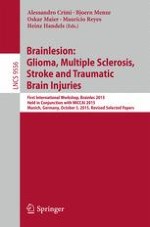2016 | Buch | 1. Auflage
Brainlesion: Glioma, Multiple Sclerosis, Stroke and Traumatic Brain Injuries
First International Workshop, Brainles 2015, Held in Conjunction with MICCAI 2015, Munich, Germany, October 5, 2015, Revised Selected Papers
herausgegeben von: Alessandro Crimi, Bjoern Menze, Oskar Maier, Mauricio Reyes, Heinz Handels
Verlag: Springer International Publishing
Buchreihe : Lecture Notes in Computer Science



